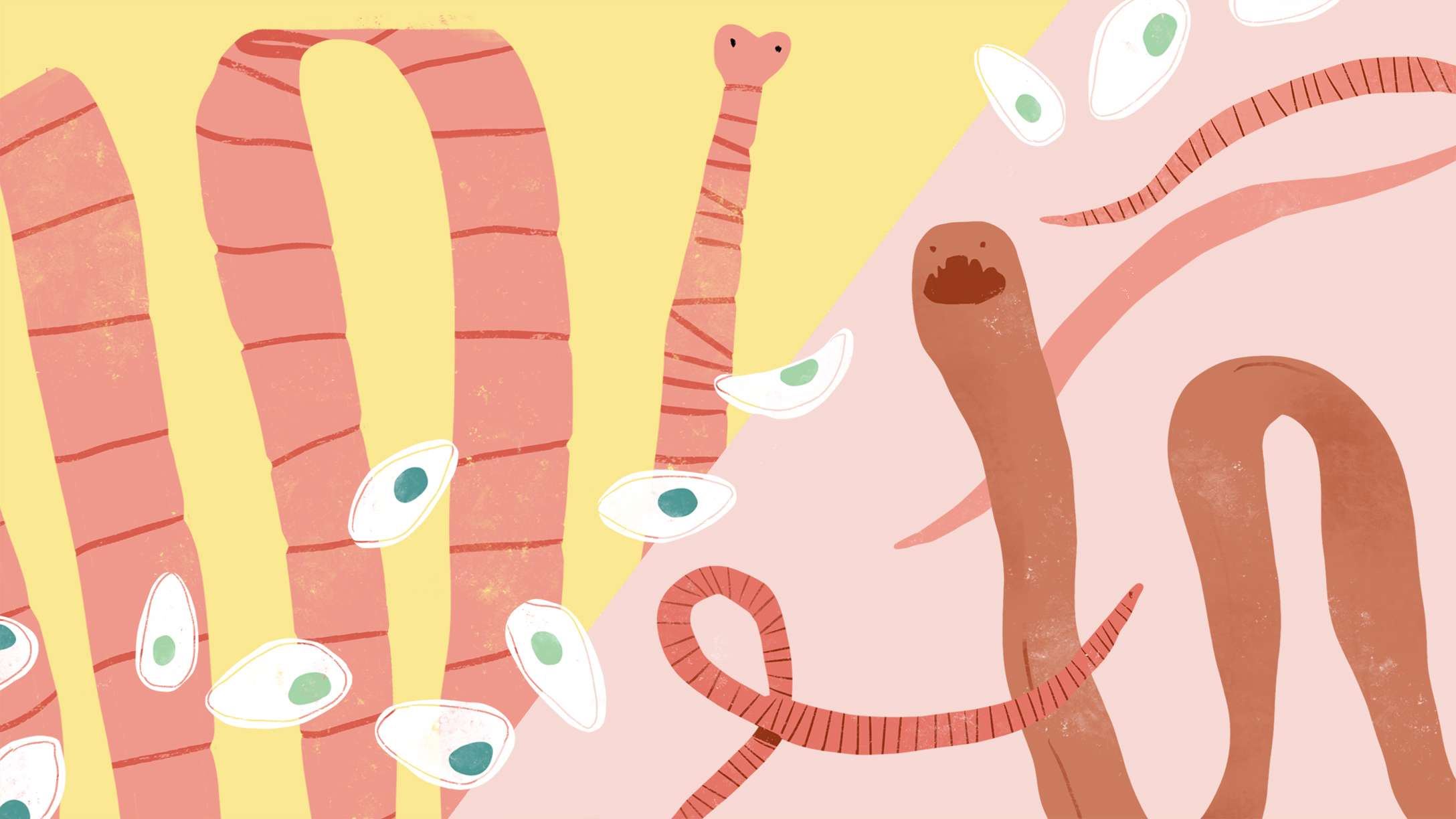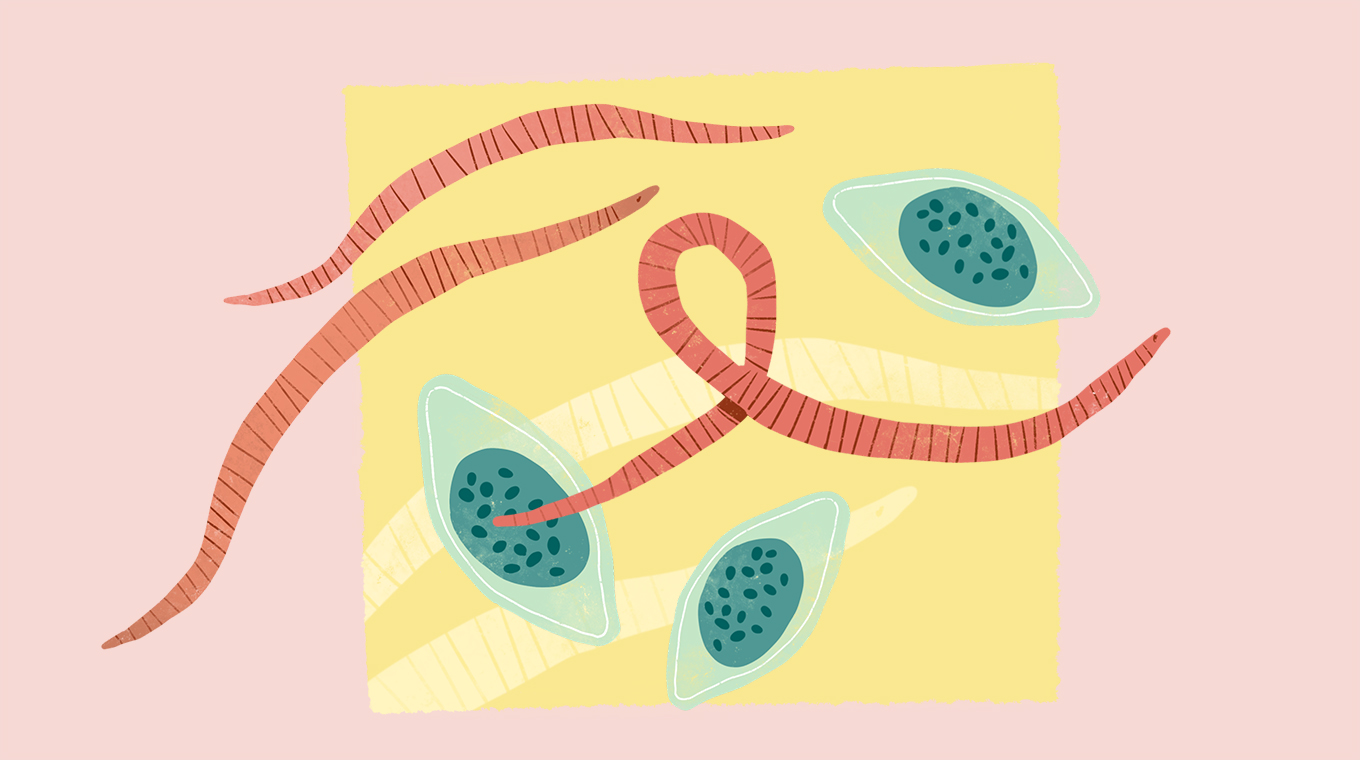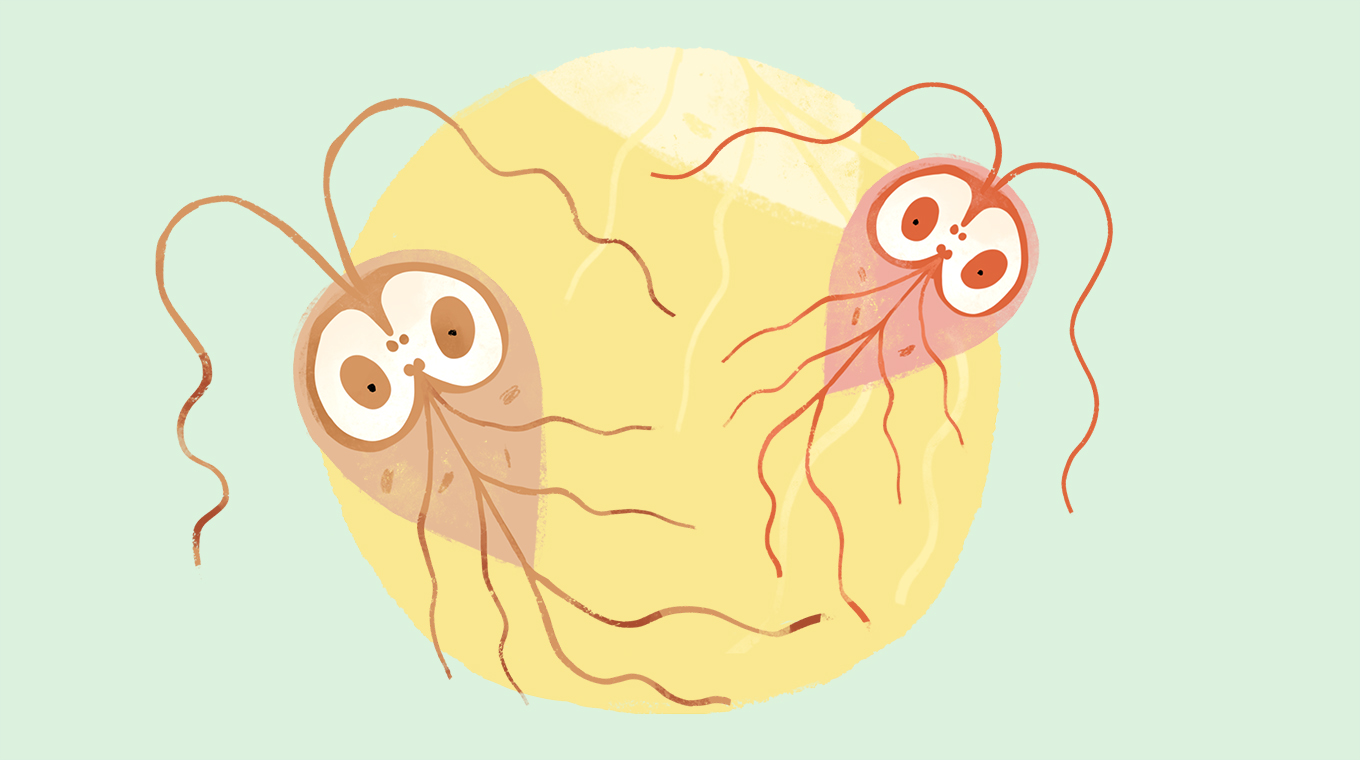
The word "parasite" has an understandably negative connotation.
The CDC explains that "a parasite is an organism that lives on or in a host organism and gets its food from or at the expense of the host."
In a broader sense, you could call a houseguest who overstays their welcome a parasite. However, the scariest cases are those that you can't even see.
Plus, horror stories like the one about a sushi lover who found a five-foot-long tapeworm after a trip to the toilet don't help — they definitely make our fears of what could be lurking inside of us that much worse.
Chances are you'll also be disturbed to learn that parasites are the most common life form on earth, according to Fact Retriever and Rob Dunn's book The Wild Life of Our Bodies.
Take a look at some of the most common parasites that might be feeding off of you as we speak.
Photo: Laura Caseley for LittleThings; Wikimedia Commons / Calicut Medical College
1. Hookworm

This illustration might make a hookworm look cute, but these little guys are not someone you actually want to share your body with.
According to the CDC, 576 to 740 million people worldwide are infected with hookworm.
The organization explains that hookworms live in the human small intestine before their eggs are released into the outside world through feces.
The eggs then hatch into larvae that can penetrate human skin, starting the cycle all over again. Most symptoms are dormant, but prolonged infection can lead to blood loss and the development of anemia.
2. Scabies Mite

Unlike a hookworm, a scabies mite lives right on the surface of your body.
The American Academy of Dermatology explains that these tiny eight-legged creatures burrow under the top layer of your skin where they live, feed, and cause itchy rashes for the host.
These mites can be transmitted through skin-to-skin contact, and occasionally from infested items like clothes or bedding.
The rash and its source may cause some emotional and physical distress, but the mites can be easily eliminated with the help of a dermatologist.
3. Roundworm

Roundworms are another unwelcome guest that enjoys making itself at home in the human intestine.
The University of Maryland Medical Center explains that people become infected through contact with soil that larvae live in.
Once they're in your intestine, they can grow from one millimeter up to one whole meter. Some signs of infection include cough, shortness of breath, abdominal pain, bloody stool, weight loss, or finding a worm in your vomit.
4. Flatworm Blood Fluke

Flatworm blood flukes tend to thrive in tropical climates where they infect over 200 million people at any given time, according to Reviews in Obstetrics and Gynecology.
The journal explains that infection by a flatworm blood fluke results in a disease called schistosomiasis. This can cause fever, abdominal pain, bloody diarrhea, and also cause major problems with childbearing and fertility for women.
The worm also enters the human body through the skin, but first, it hitches a ride on a snail it hopes comes close enough to a larger host.
5. Tapeworm

Tapeworm is one of the parasites that people tend to be most familiar with.
These parasitic worms enter their human hosts through the ingestion of water or food that is contaminated by eggs or larvae, according to the Mayo Clinic.
Ingesting eggs can cause the development of larval cysts in and around your organs and tissues. However, ingested larvae have the ability to head straight for your intestines, where they will thrive and develop into adults.
Adult tapeworms can live for up to 30 years inside a human body, and they enjoy the nutrients from whatever their host feeds them.
Tapeworm infection can cause nausea, weakness, loss of appetite, salt craving, and a number of other gastrointestinal complications.
6. Pinworm

Pinworms are another common parasitic worm that loves to get cozy in human intestines.
In fact, the Mayo Clinic reports that pinworm infection is the most common of the intestinal worms in the United States.
The way they break into the human body is especially disgusting.
The Mayo Clinic explains, "While the infected person sleeps, female pinworms lay thousands of eggs in the folds of skin surrounding the anus."
Symptoms often include itching around the genital and anal areas during sleep. The eggs then get under fingernails, and then to whatever surface hands come into contact with.
7. Toxoplasma Gondii

These parasites may have a big name, but they themselves are tiny single-celled organisms, according to the CDC.
People can become infected by these parasites through eating undercooked food, drinking water where toxoplasma live, and even by cleaning their cats' litter box.
Most people who are infected do not show symptoms because their immune system keeps them at bay. However, people with compromised immune systems or pregnant women may experience flu-like symptoms.
8. Giardia Lamblia

Giardia is the microscopic parasite responsible for the diarrheal disease known as giardiasis, according to the CDC.
The giardia's protective outer shell helps it to survive outside the body, and also makes it extremely tolerant to disinfectants.
Symptoms are all gastrointestinal and can range from diarrhea to gas, greasy stool, nausea, and dehydration.
9. Liver Fluke

Liver flukes make their way into their human hosts through the ingestion of infected freshwater fish, according to the Korean Journal of Radiology.
The parasites settle down in the small intrahepatic bile ducts where they can thrive for up to 30 years.
Liver flukes affect about 35 million people all over the world, who usually do not show symptoms unless the infection is extremely severe. In these cases, serious complications in the liver and bile ducts may occur.
Be sure to SHARE this information with your loved ones!




